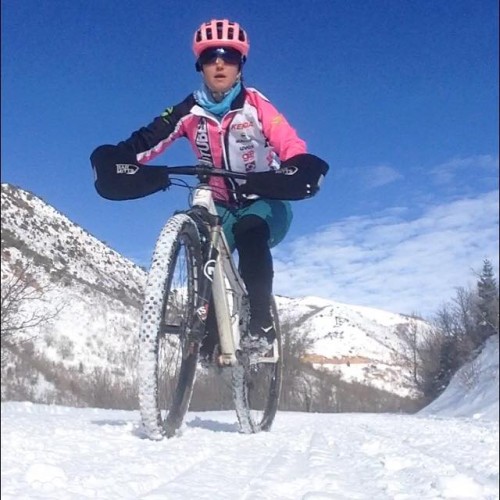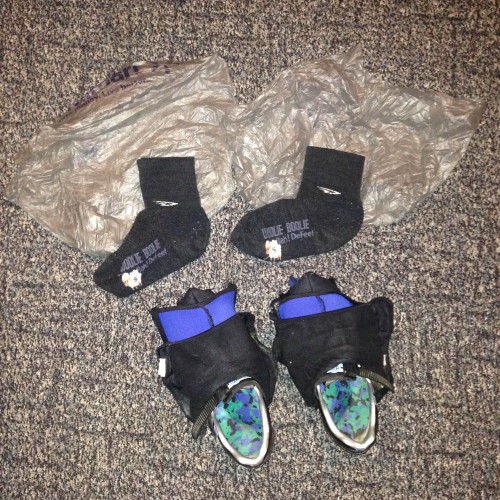Question: I absolutely hate riding a trainer and I don’t own a fat bike yet. Where I live where there usually are at least 4-5 weeks over the winter that I can’t get any riding in. Do you have any suggestions for how I can still train aerobically for biking?
Answer: In my last post, I wrote about the importance of taking some time off the bike. In this case, the weather just forces the issue! The timing may not be ideal if you are forced off your bike in January, but some time off is a great idea and can really balance us. And many times, if it pushes your peak form a little further back into the season, you’ll be hitting your stride in July when everyone else is burning out.
There are so many outdoor activities that are WAY more fun to do in the winter than cycling! It is great to take advantage of them; snowshoeing, Nordic skiing, running, hiking, indoor swimming, and backcountry skiing are just a few. As with any new activity, make sure you give yourself a couple weeks at a zone 2 or endurance pace to let your body adjust. Then you can incorporate the same types of intervals that you would do on your bike to improve aerobic endurance. I like rolling zone 3 or tempo intervals for this time of year, i.e. on climbs let your HR get up to zone 3/ tempo and stick to endurance or zone 2 the rest of the time. Swimming or walking are great activities for your recovery days.
This would also be a great time to incorporate some strength training. You could do 2-3 days per week of strength training alone and 1-2 days of strength training in addition to one of the above endurance activities. Some of the programs I like best are Core Performance by Mark Verstegen; Weight Training for Triathlon: The Ultimate Guide (yes, I know it says Triathlon) by Ben Greenfield; and Kettlebell Simple & Sinister by Pavel Tsatsouline. You can also include alpine skiing or snowboarding as strength workouts, though I would recommend using them in conjunction with a dedicated strength program. CrossFit or similar HIIT style workout classes are another good option 2-3 days per week.
With a little planning you should be able to create a periodized plan incorporating some intensity days like CrossFit, running or Nordic skiing; some volume days like snowshoeing, Nordic or backcountry skiing, running or hiking; recovery days like swimming or walking; outdoor strength work like alpine skiing or snowboarding; and indoor strength work in the gym.
If you get the occasional day of mild weather, take the opportunity to get out on your bike; even a quick turn of the pedals will help maintain the neuromuscular connection. I would also add, I know from personal experience how miserable it is to ride a trainer and I went for years avoiding them. But for the last couple of winters, I have taught PLAN7 House of Watts computrainer spin classes. Improved technology makes a big difference, as does a group setting. But more than that, a variable workout with frequently changing intervals and lots to pay attention to can make the time go by much quicker. For most of my athletes this time of year, I ask them to be on their bike 3-4 times per week and doing off-the-bike endurance training 3-4 times per week. To accomplish the days on the bike, I maintain a library of trainer workouts. Most are 1 hour to 1:15 in duration and the intervals are short and variable to make them tolerable. I have found that even the most staunchly opposed to the trainer can usually make them happen, at least a couple of times a week. A coach should recognize the risk of burnout in asking you to sit for monotonous hours on the trainer.
Another note, I hear a lot of people say they can tolerate the cold on their bikes…except for their hands and feet. Here are a couple of tips to help with that; for the hands: Bar Mitts. barmitts.com– nothing better. I ride in my summer gloves in Bar Mitts in 20° weather so you could definitely tolerate colder with thicker gloves. You can also use latex or dish gloves under your winter gloves. For the feet: layers; plastic bag, wool socks, shoes (with a wool insole), two pairs of shoe covers. I don’t use winter specific shoes but I do use a (euro) size larger shoe so my toes have plenty of room to wiggle and keep circulation with the extra layers in there. I have Raynaud’s disease so my toes go numb very easily and this seems to get me through rides in the 20°s for a couple of hours. You can also just run flat pedals and winter boots. Ride your MTB or the heaviest, slowest bike you have. *Note: latex gloves and plastic bags on your hands and feet – yes, it gets incredibly sweaty and gross. But that sweat is warm. The goal is staying warm, I never said it didn’t come at a price…
So there’s the rundown; some off-the-bike ideas and some question-skirting answers to get you on the bike here and there too!
Sarah Kaufmann is a USAC Level II coach under the PLAN7 Endurance Coaching brand. She is a member of the Stan’s NoTubes Women’s Elite Mountain Bike Team and has been racing mountain bikes at the professional level since 2008. Sarah is based in Salt Lake City, Utah.





